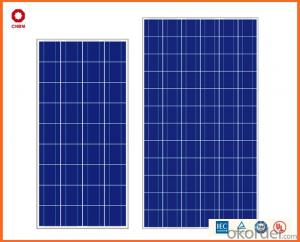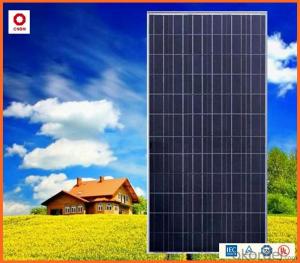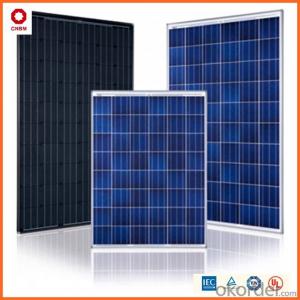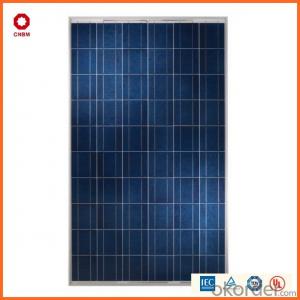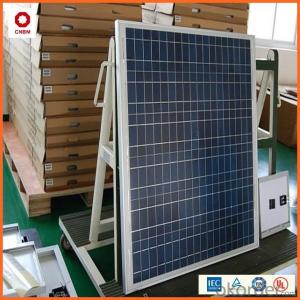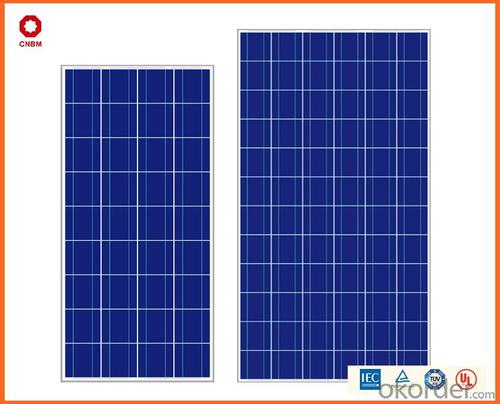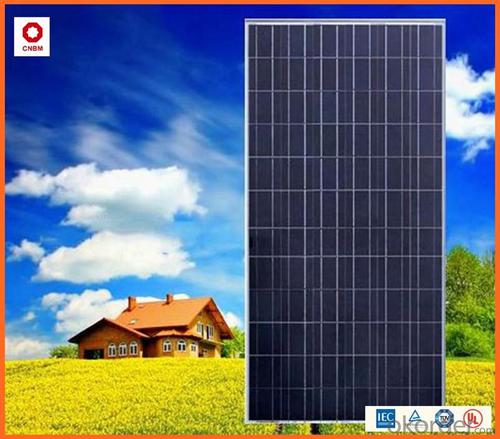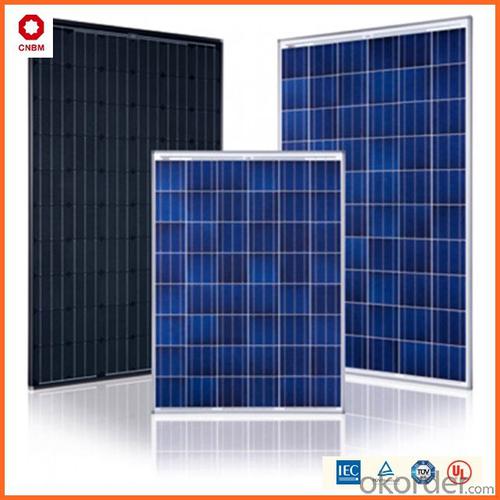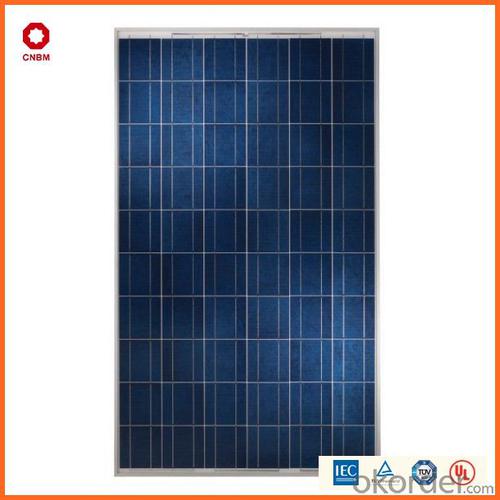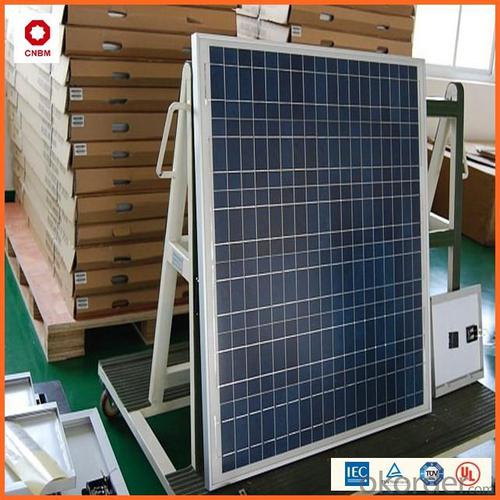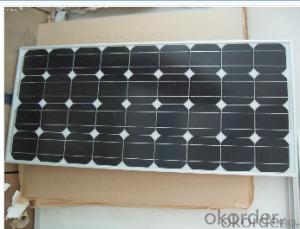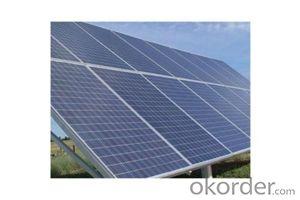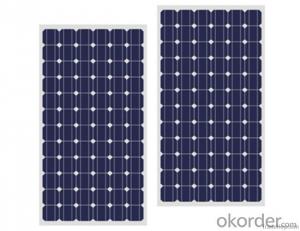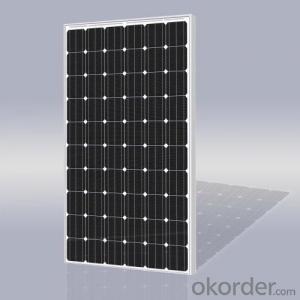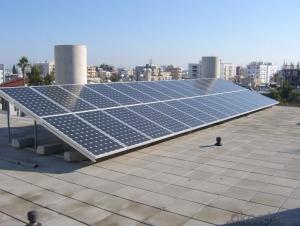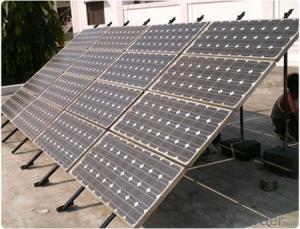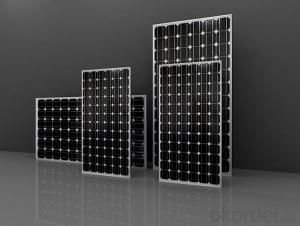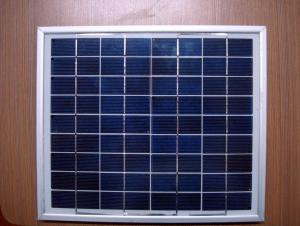Sailing Yacht Solar Panels 250w Monocrystalline Panel CE TUV UL ETL MCS Certificates
- Loading Port:
- China main port
- Payment Terms:
- TT OR LC
- Min Order Qty:
- 1000 watt
- Supply Capability:
- 1000000 watt/month
OKorder Service Pledge
OKorder Financial Service
You Might Also Like
Packaging & Delivery
Packaging Details: 25PCS/Pallet, carton box with wooden pallet or wooden box with pallet
Delivery Detail: 7-15 days according to the order quantity
Product Description
A Grade 305w high efficiency Poly PV Solar panels
Max Power Voltage Vmp(V) | 31.5 |
Max Power Current Lamp(A) | 7.94 |
Open Circuit Voltage Voc(V) | 37.5 |
Short Circuit Current Isc(A) | 8.72 |
Temperature Coefficients of Isc (%/℃) | 0.0825 |
Temperature Coefficients of Voc (%/℃) | -0.4049 |
Temperature Coefficients of Pmp (%/℃) | -0.4346 |
Max Power(w) | 305 |
Limited Product Warranty
Under normal application, installation, use and service conditions, if MODULES fail to conform to this limited product warranty due to defects in material or workmanship, then for a period ending 12 years from date of sale as shown in the invoice or Contract issued by CNBM SOLAR. CNBM SOLAR will, at its option, either repair or replace or refund the purchase price as paid by the client for these defective MODULES. The repair or replacement or refund remedy shall be the sole and exclusive remedy provided under the “Limited Product Warranty” and shall not extend beyond the 12 years period set forth herein. It will be performed directly to the direct client only. This “Limited Product Warranty” does not warrant a specific power output, which shall be exclusively covered under “Limited Peak"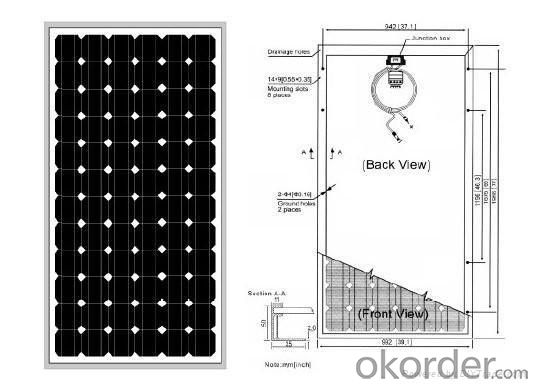
Company Profile
China National Building Material (CNBM) Group Corporation

CNBM International Corporation is a professional solar panel manufacturer in China for CNBM brand . Silicon panel ( silicon module), as our main product, has high quality and good service. Our products are very popular in Europe, Australia, England, Middle East, Mexico, Argentina, Chili, Singapore and Africa.
Furthermore, our products have gained international authorized certificates like TUV, UL and CE.
China National Building Material (Group) Corporation (CNBM), established in 1984, is one of the largest State-owned group corporations of building & mechanical materials which specializes in the design, manufacturing and distribution of building materials in the world.
As the whole world turns “green”, CNBM enters into the Photovoltaic Industry in 2005.After 6 years' fast growth, now our annual capacity is 500MW solar panel and 500MW solar cell.
FAQ
We have organized several common questions for our clients,may help you sincerely:
1.what price for each watt?
it depends on the quantity, delivery date and payment terms,
2.what is your size for each module? can you tell me the parameter of your module?
we have different series of panels in different output, both c-si and a-si. please take the specification sheet for your reference.
3.Can you provide the peripheral products of the solar panels, such as the battery, controller, and inverter? If so, can you tell me how do they match each other?
Yes, we can, we have two companies for solar region, one is CNBM International, the other is CNBM engineering Co.
We can provide you not only the solar module but also Solar Cells, the off grid solar system, we can also provide you service with on grid plant.
4What is your warranty system?
Our product performance guarantees for 25 years
• 12 years guarantee for workmanship
• Timeliness of delivery
• Quality Products certified (TÜV, UL, CE, ISO)
5.How do you pack your products?
We have rich experience on how to pack the panels to make sure the safety on shipment when it arrives at the destination.
6. Can you do OEM for us?
Yes, we can.
7.How long can we receive the product after purchase?
In the purchase of product within three working days, We will arrange the factory delivery as soon as possible. The pecific time of receiving is related to the state and position of customers. Commonly 7 to 10 working days can be served.
- Q: Hi. I need to build a solar panel for a project. it should be able to light a 60 watt light bulb. also, it should be about 3x3 ft if it is 50% efficient. if anyone knows any websites or can help me, please answer! thanks.
- I don't have any practical experience building solar panel arrays to power a given device, but allow me to make this observation. Solar cells, when exposed to sunlight, will each generate a given amount of power (watts), and by wiring these in series, you will increase the wattage. Now, a panel three feet square will give you a certain amount of power, provided all the cells are wired correctly in series, and it may not provide enough juice to light the bulb. You can work around this by adding a step-up transformer (which takes the incoming power and boosts it to the desired level for output, with no moving parts). Voila! You've illuminated your bulb. I will admit, though, you'll have to do some math to determine what you need. A search on the Web will help you find the formulae and other information you'll require. Good luck.
- Q: Hey i am going to build a scale model house and demonstrate how you would use solar panels to provide energy. I am thinking of buying some kit solar panels and wiring up some lights to show how they power the home. Also i might hook up a battery in the house to show how you can store the energy. I might also have a large battery hooked up outside the house to represent a power plant that could provide emergency power. Any ideas or comments would be great. Thanks
- Build okorder /
- Q: How often do solar panels need to be replaced or repaired roughly? Is it costly to do so?
- I'm okorder /... . That means that not only do they guarantee the panel won't completely die, they guarantee that it will deliver a certain amount of power. That suggests that manufacturers expect most panels to last longer than 25 years. Our panels have been up a little over 5 years - no trouble yet. In a dirty location, or where the panels are mounted flat, occasional cleaning may be required. In many place, the morning dew and slant of the panels is enough to keep them clean. In my limited experiments with our panels, I saw little difference in power production between a panel that appeared dingy to the eye, and one that was just cleaned. There is a component called an inverter used in most solar power systems. That generally has a warranty of 0 years, so expect it to break after 5, to be replaced at a cost of a few thousand dollars. Or maybe repaired for less. The kind of solar power popularly installed today does not use batteries. Batteries are generally only for remote installations that did not have grid power when the solar was first put up.
- Q: Are there any noise concerns with solar panels?
- No, there are no noise concerns with solar panels as they do not produce any sound while generating electricity.
- Q: I've found something called maximum system voltage 000v on my 0 w panel nameplate. Its impossible for 0w to have 000v, right?
- System voltage is the total across the full chain of panels, when using multiple panels in series. It's what the insulation on the panel is rated to stand, to earth/ground, without breaking down. A device could have an output rating of V and still a 000V insulation rating. eg. if your 0W panel had an open-circuit voltage of 25V, the insulation is rated to stand up to 40 panels connected in series. (40 x 25 = 000V). And actually a 0W power source could be rated at 000V, if it's current rating was only 0 milliamps. (Though extremely impractical for a solar panel unit).
- Q: For those solar panels that you install on your rooftops, do they generate electricity when it's cloudy? And if yes, how much electricity does it generate compared to sunny days? For example...like only 25% electricity generated compared to sunny days?
- Yes. If there is any light, even on a cloudy day, a solar panel can generate power. But the amount of power generated is much less when the solar panel is not in direct sunlight (about 90% less). On a cloudy day, typical solar panels can produce 0-25% of their rated capacity. The exact amount will vary depending on the density of the clouds, and may also vary by the type of solar panel; some kinds of panels are better at receiving diffuse light. SunPower solar cells, for example, have been designed to capture a broader range of the solar spectrum. By capturing more red and blue wavelengths, their solar panels can generate more electricity even when it’s overcast. Ultraviolet light also reaches the earth’s surface in abundance during cloudy days (if you’ve ever been at the beach when it’s cloudy and gotten a sunburn, you’ve experienced this firsthand). Some solar cells are in development that can capture UV rays, although these are not out on the market yet. Even with a standard solar panel on a cloudy day, though, you will be able to generate some power when it’s daylight. The same thing is true in foggy weather. If you live in a city with frequent fog, like San Francisco, you’ll still be able to generate electricity when the fog rolls in. :)
- Q: How can I know the right type of solar panel to choose for my small village house in Africa?
- The power output of a solar panel uses a formula to determine kilowatts produced per hour per square meter per day. This calculation is important because, if you plan to install a solar power system for your home, you will want to know how many solar panels will be needed. To calculate solar power requirements correctly, you need to gather the data that is needed for the calculation. First you have to find the average amount of solar radiation available for your area. You can use a solar radiation chart. This can range from a 4 to a 7 depending on the area you live in. Write the number down on a piece of paper and indicate it with the letters RA. Next is determine the amount of electricity that you use daily. Add the kilowatt-hours used per month from your utility bill. Multiply this number by ,000 to get the watt hours in a month. Divide the total by 30 for the amount of electricity you use daily. Write this number down and indicate it with the letters DE. Determine the percentage of your home that you want to power with the solar power system. Write this number down and indicate it with the letter P. Determine the system inefficiency factor for the solar power system. You should be able to find this on the brochure for the system or from the manufacturer's web site. Write this number down and indicate it by the letter I. Determine the power or yield that is required for your home. Use the equation P = I x (DE x P) / RA to find the power requirements in kWh. Divide the number from Step 5 by the peak wattage for a single solar panel to determine the number of panels you will need for your home. Goodluck! :)
- Q: Can solar panels be installed on a government building or facility?
- Yes, solar panels can be installed on a government building or facility. In fact, many governments around the world are actively promoting the use of renewable energy sources, including solar power, to reduce their carbon footprint and promote sustainability. Installing solar panels on government buildings not only helps in generating clean and renewable energy but also sets an example for the community and encourages others to adopt green energy practices.
- Q: Are solar panels safe for the environment?
- Yes, solar panels are safe for the environment. They generate electricity using sunlight, which is a renewable and clean energy source. Solar panels produce no greenhouse gas emissions, air pollution, or waste materials during operation. Additionally, they do not deplete natural resources, as sunlight is an abundant and infinite source of energy.
- Q: I was just wondering what the minimum and maximm charging voltage and ampere is for li ion batteries. If i connect a solar panel, which only gets enough sunshine to generate voltage, will that still charge the battery, or would i have to series connect solar panels until they together reach 3,7volt?
- One lithium cell requires 4.2V to obtain its full charge, Never exceed 4.2V ! Output from solar panel if below 3.7V , nothing charge to lithium. Total charging time until the cell is full depending on the AH rate of cell and the charging current that solar panel can be provided. Suppose cell is rate 5AH, and the charging current from solar panel under full sun shine can maintain 0.5A ( use solar panel short circuit current rate from its specification as a reference ) , hence, 0 hours is enough. And be sure the solar panel can maintain 4.2V output at 0.5A . Remember, over charge lithium cell one time might reduce its life into half . Therefore, let the solar panel output passing through a precision regulator to maintain output is 4.2V is the best way, because, as cell reaches 4.2V , no more charging current is forced into cell ( automatic stop charging ). If you do not have the knowledge to make this simple variable voltage regulator with LM37K ( if you choose this way, buy solar panel output has at least 2V) , you may choose to do it manually by install a current meter and a variable resistor in series between the panel output to cell. By adjust the value of resistor, charging current can be controlled ( if you choose this way, buy solar panel output has as less as 6V ). Count the charging time with a clock and adjust the charging current from time to time to maintain 0.5A .
Send your message to us
Sailing Yacht Solar Panels 250w Monocrystalline Panel CE TUV UL ETL MCS Certificates
- Loading Port:
- China main port
- Payment Terms:
- TT OR LC
- Min Order Qty:
- 1000 watt
- Supply Capability:
- 1000000 watt/month
OKorder Service Pledge
OKorder Financial Service
Similar products
Hot products
Hot Searches
Related keywords
